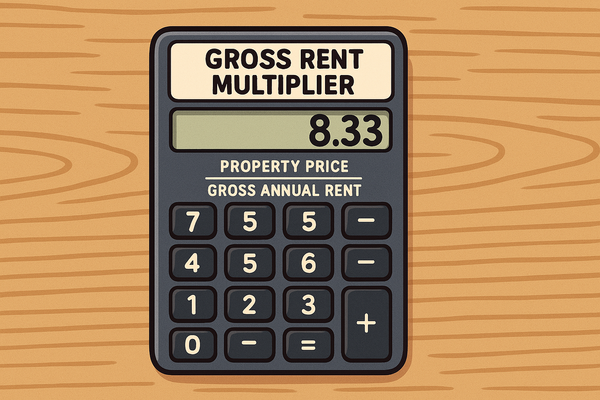Wisconsin Squatters Rights Guide: Understanding Adverse Possession Laws
Wisconsin employs a three-tiered adverse possession timeline which requires 20 years of continuous occupation, reduced to 10 years with color of title, or just 7 years with both color of title and consistent property tax payments

From lakefront larceny to arson-fueled revenge, Wisconsin's unique landscape of squatters' rights offers a startling glimpse into property disputes gone wrong.
After 40+ years of caring for 25 feet of lakefront property and losing the case in the Wisconsin Supreme Court simply because of words the squatters said, to the squatters turned arsonists in a game of squatter's revenge, the state of Wisconsin has developed one of the nation's most complex frameworks for addressing unauthorized property occupation.
This guide unpacks Wisconsin's multi-tiered adverse possession system, equipping property owners with essential knowledge to protect their real estate from both legal loopholes and physical threats in a state where a single verbal disclaimer or a 20-year clock can dramatically alter property rights forever.
Introduction to Squatters' Rights in Wisconsin
- Definition of squatters vs. trespassers in Wisconsin: Squatters occupy property without legal permission but aim to establish ownership through adverse possession, while trespassers merely enter property illegally with no ownership claims.
- Basic overview of adverse possession in Wisconsin: Wisconsin employs a multi-tiered system with different statutory periods depending on specific circumstances, creating a relatively stringent environment compared to many other states.
- Why property owners should understand these laws: Understanding Wisconsin's adverse possession framework helps protect your property rights and prevents the potential loss of valuable real estate to unauthorized occupants.
- Historical purpose of adverse possession laws: These laws originally encouraged productive land use and resolved boundary disputes when record-keeping was less precise.
Squatter Snippet: Real Case from Wisconsin
In August 2024, one of the most shocking squatter incidents in Wisconsin occurred in Milwaukee's north side. Gladys Carroll-Weathersby was at work when she received nearly 60 frantic calls from neighbors informing her that her house was on fire. Rushing home in panic, she was relieved to find that firefighters had already extinguished the blaze. However, the fire hadn't actually been at her home, but at a vacant property just feet away from her house.
What makes this case particularly disturbing is that when Carroll-Weathersby checked her security footage, she discovered the fire was deliberately set. The surveillance video captured a man in a red shirt methodically pouring gasoline along the side of the vacant house next door, then setting fires at multiple locations. Carroll-Weathersby immediately recognized the arsonist - he was one of several squatters who had recently been removed from that same vacant home.
"He was one of the ones that we put out of the house," she told reporters. "For him to come back and try to burn it and it being so close to my home—I was livid."
This case illustrates why it's important for property owners to understand Wisconsin's squatter laws and the potential dangers of squatter situations.
Key Timeline: Statutory Period in Wisconsin
- Required occupation period: Wisconsin employs a three-tiered adverse possession timeline which requires 20 years of continuous occupation, reduced to 10 years with color of title (documentation that appears valid but is legally defective), or just 7 years with both color of title and consistent property tax payments:
- Continuous possession requirement: Occupation must be without significant gaps for the entire statutory period
- Comparison with neighboring states:
- Timeline exceptions:
- Military service
- Incarceration
- Legal incompetence/disability (the statutory period doesn't begin until the disability is removed)
CHART: Adverse Possession Timeline Comparison
| State | Required Years (Standard) | With Color of Title | With Color of Title & Tax Payment |
|---|---|---|---|
| Wisconsin | 20 years | 10 years | 7 years |
| Illinois | 20 years | N/A | 7 years |
| Iowa | 10 years | N/A | N/A |
| Minnesota | 15 years | Reduced period | Reduced period |
| Michigan | 15 years | Reduced period | N/A |
Quick Guide for Property Owners
Under Wisconsin's multi-tiered system, squatters may establish ownership after 20 years of continuous occupation under standard conditions, or in as few as 7 years with both color of title and consistent tax payments.
This makes regular monitoring of properties essential, particularly for vacant or seasonal properties that may be more vulnerable to unauthorized occupation.
Property owners should understand that Wisconsin's Affidavit of Interruption mechanism, established in March 2016 through Wisconsin Statute § 893.305, provides a valuable tool to proactively "restart the clock" on potential adverse possession claims before they mature, offering stronger protection than available in many neighboring states.
- Know your timeline: Squatters can claim rights after 20 years of continuous occupation (or as few as 7 years under specific circumstances)
- Documentation matters: Keep property records, tax receipts, and inspection logs to prove ongoing ownership
- Regular monitoring required: Vacant properties are most vulnerable to unauthorized occupation
- Legal obligation: Self-help eviction methods are illegal in Wisconsin and can result in penalties
- Act quickly: The longer squatters remain, the stronger their potential claim
- Proper notices: Follow legal procedures when removing unauthorized occupants
- Affidavit of Interruption: This legal tool allows you to potentially "reset the clock" on the squatter back to day one, giving you more time to go through the eviction process to get your property back
Prevention: Protecting Your Property
Wisconsin's legal framework for adverse possession presents unique challenges for property owners. The state's courts apply strict interpretations of the required elements for adverse possession claims, making it essential for property owners to implement robust preventative strategies.
Additionally, Wisconsin's 2016 introduction of the Affidavit of Interruption mechanism provides property owners with a powerful tool to proactively interrupt adverse possession claims before they mature.
- Regular inspections:
- Visit property at least quarterly (more frequently for vacant properties)
- Document each visit with photos/notes to establish ongoing ownership interest
- Effective security measures:
- Secure all entry points
- Consider alarm systems and cameras with remote monitoring
- Install motion-activated lighting
- Clear signage:
- Post "No Trespassing" signs visibly around property
- Mark property boundaries clearly to prevent boundary disputes
- Property management options:
- Hire professional management for vacant properties
- Consider rental options for long-term vacancies
- Documentation practices:
- Keep tax payment records
- Maintain utility connections
- Take dated photographs regularly
- File an Affidavit of Interruption if you suspect adverse possession activity
CHART: Property Risk Assessment Matrix
| Property Type | Risk Level | Recommended Prevention | Estimated Cost |
|---|---|---|---|
| Vacant Land | High | Boundary markers, regular inspections, Affidavit of Interruption | $500-$2,000 |
| Abandoned Building | Very High | Security system, property management, regular maintenance | $2,000-$5,000 |
| Seasonal Property | Medium | Timer lights, security system, neighbor monitoring | $1,000-$3,000 |
| Investment Property | Medium | Professional property management, tenant screening | $1,500-$4,000 |
Removing Squatters: Step-by-Step Process
Wisconsin law requires property owners to follow specific legal procedures when removing unauthorized occupants. Attempting "self-help" eviction methods is strictly prohibited and can result in legal penalties.
Wisconsin Statutes Chapters 704 and 799 outline the framework for eviction procedures in the state.
- Document the situation:
- Take photos/video of occupation
- Gather ownership documents and property records
- Issue proper written notice to vacate
- File appropriate legal complaint:
- Unlawful detainer action in Wisconsin
- File in small claims court if damages are under $10,000
- Attend court hearing
- If successful, obtain eviction order
- Sheriff enforces removal, not property owner
- What NOT to do:
- Do not change locks yourself
- Do not shut off utilities
- Do not remove squatter's belongings
- Do not threaten or intimidate
- Do not use physical force
- Timeline expectations:
- Notice period: Varies based on circumstances
- Court processing: 2-6 weeks
- Eviction enforcement: 5-10 days after judgment
CHART: Eviction Process Timeline
Wisconsin's eviction process follows specific timelines established by state law. The actual processing time may vary depending on court schedules and caseloads in different counties.
Milwaukee County, for example, may have longer processing times due to higher caseloads than rural counties. The entire process typically takes between 3-8 weeks from initial filing to actual removal of unauthorized occupants.
[Discovery of Squatter] → [Documentation: 1-2 days] → [Notice to Vacate: 5-30 days] →
[Court Filing: 1 day] → [Waiting for Hearing: 2-4 weeks] → [Court Hearing: 1 day] →
[If successful, Wait for Order: 3-5 days] → [Sheriff Enforcement: 5-10 days] → [Property Returned]
Total estimated timeline: 3-8 weeks
Legal Requirements for Adverse Possession
Wisconsin courts require five essential elements for a valid adverse possession claim, commonly remembered by the acronym "OCEAN" (Open, Continuous, Exclusive, Adverse/Hostile, Notorious). These elements must be proven by the squatter attempting to claim ownership through adverse possession, and Wisconsin courts typically apply strict interpretations of these requirements.
- Hostile Claim
- Definition: Possession without the owner's permission or consent
- Wisconsin recognizes several interpretations, including honest mistake, occupation without knowledge of other ownership, or knowing trespass with ownership claim
- Significant case: Pine Knot Camp v. Kaminski established a stricter standard for hostility in Wisconsin
- Actual Possession
- Physical occupation and use of the property
- Must involve actual entry and physical control
- Evidence includes improvements, maintenance, and regular use
- Open and Notorious Possession
- Visible occupation that would alert a reasonable property owner
- Must be noticeable to the community, not secretive
- Activities should be consistent with normal ownership
- Exclusive Possession
- Squatter must exercise sole control over the property
- Cannot share possession with the legal owner or others
- Must act as the sole decision-maker regarding the property's use
- Continuous Possession
- Uninterrupted occupation for the entire statutory period (20, 10, or 7 years)
- Brief absences generally don't interrupt continuity
- Wisconsin allows "tacking" of possession time between privity relationships
CHART: Adverse Possession Requirements Matrix
| Requirement | Required in Wisconsin? | Evidence Courts Accept | Common Pitfalls |
|---|---|---|---|
| Hostile Claim | Yes | Payment for improvements, no permission documentation, acts contrary to owner's interests | Having owner permission, acknowledging superior title |
| Actual Possession | Yes | Improvements, residence, cultivation, maintenance records | Minimal or occasional presence, insufficient physical control |
| Open & Notorious | Yes | Visible improvements, witness testimony, regular use | Secretive occupation, minimal visible evidence |
| Exclusive | Yes | Sole decision-making, excluding others, payment of expenses | Shared use, owner access, multiple occupants |
| Continuous | Yes | Consistent occupation records, utility bills, maintenance logs | Significant gaps in occupation, seasonal use only |
Frequently Asked Questions
- "Can I remove squatters myself?"
- No, self-help eviction is illegal in Wisconsin
- Must follow legal eviction process through the courts
- "Do squatters have to pay property taxes?"
- Tax payment may strengthen adverse possession claim
- Required for the shortened 7-year statutory period
- Not required for standard 20-year claims
- "What's the difference between a squatter and a trespasser?"
- Trespassers: Short-term unauthorized presence with no ownership claim
- Squatters: Ongoing occupation with potential adverse possession claim
- "Who should I contact first - police or sheriff?"
- For immediate safety concerns: Police
- For eviction enforcement: Sheriff
- "Can squatters claim abandoned property?"
- Yes, if all adverse possession requirements are met
- Abandonment may actually strengthen their claim
- "How quickly can I evict a squatter?"
- Typical timeline: 3-8 weeks
- Factors affecting timeline: court schedule, appeals, evidence quality
CHART: Decision Tree for Property Owners
Wisconsin law establishes specific processes for handling unauthorized occupants based on the nature of their presence and the potential threat level. Law enforcement response may vary depending on whether the situation is classified as criminal trespass (immediate police matter) or civil squatting (requiring court proceedings).
The Wisconsin Department of Justice provides guidance to law enforcement agencies regarding the distinction between these scenarios.
Discovered Someone on Your Property
├── Emergency/Dangerous Situation? → Yes → Call Police
│ └── No ↓
├── Recent Entry (Less than 24 hours)? → Yes → Call Police (Trespasser)
│ └── No ↓
├── Evidence of Established Occupation? → Yes → Legal Eviction Process Required
│ └── No ↓
└── Uncertain Situation → Consult Attorney Before Taking Action
Recent Legislative Changes in Wisconsin
Wisconsin has made significant changes to its adverse possession laws in recent years, most notably with the introduction of the Affidavit of Interruption mechanism in 2016. This legislative development represents a shift toward greater property owner protection by providing a tool to proactively interrupt potential adverse possession claims before they mature.
- Recently Passed Laws:
- Wisconsin Statute § 893.305 (March 2016): Created the "Affidavit of Interruption" mechanism
- Impact on property owners: Allows property owners to "restart the clock" on adverse possession claims
- Effective date: March 2016
- Pending Legislation:
- No major pending legislation specifically addressing adverse possession as of latest updates
- Legislative Trends:
- Wisconsin has trended toward strengthening property owner protections
- This aligns with national trends focusing on clearer adverse possession standards
State-Specific Considerations
- Color of Title in Wisconsin:
- Definition: Document that appears to give ownership rights but is legally defective
- Impact on statutory period: Reduces from 20 years to 10 years
- Further reduction to 7 years with tax payment
- Documentation requirements: Must be recorded within 30 days of execution
- Burden of proof requirements:
- Squatter must prove all elements of adverse possession
- Wisconsin courts apply strict interpretations of required elements
- Recent legal developments:
- Affidavit of Interruption mechanism (Wisconsin Statute § 893.305)
- Continuing trend of strict interpretation of "hostile" possession requirement
- How Wisconsin differs from neighboring states:
- Longer standard statutory period (20 years) than some neighboring states
- Multi-tiered system with different requirements based on circumstances
- Unique Affidavit of Interruption mechanism
- Strong protections for vulnerable property owners (minors, disabled)
CHART: Wisconsin vs. Neighboring States Comparison
| Factor | Wisconsin | Illinois | Iowa | Minnesota | Michigan |
|---|---|---|---|---|---|
| Statutory Period | 20 years | 20 years | 10 years | 15 years | 15 years |
| Color of Title Impact | Reduces to 10 years | No impact | No impact | Reduces period | Reduces period |
| Tax Payment Required | For 7-year period only | For 7-year period | No | No | No |
| Special Conditions | Affidavit of Interruption | None significant | None significant | None significant | None significant |
| Strictness Rating | 4/5 | 3/5 | 2/5 | 3/5 | 3/5 |
Advanced Legal Process
- Court proceedings in detail: Wisconsin uses unlawful detainer actions to remove squatters, which can be filed in small claims court if damages are under $10,000
- Evidence requirements: Property owners must provide proof of ownership, documentation of unauthorized occupation, and evidence of proper notice
- Potential outcomes and appeals: Unsuccessful claimants may appeal decisions, potentially extending the resolution timeline
- Monetary judgments and damages: Courts may award damages for property destruction or lost rental value
- Impact on property title: Successful adverse possession claims transfer legal title to the adverse possessor
- Special provisions for legally incompetent individuals: Statutory period doesn't begin until disability is removed
Real-World Examples
- Milwaukee Arson Case (2024): Evicted squatter returned to set fire to vacant property in revenge, demonstrating the potential dangers of squatter situations
- Wilcox v. Estate of Hines: There was a strip of lakefront land near Lake Delton in Wisconsin. The Somas (the original owners in this story) used this strip of land for years. They put up "No Trespassing" signs, made improvements to it, and acted in many ways like they owned it.
- But here's the key twist: whenever anyone asked them about the land, the Somas would say "Oh, we don't actually own this."
- When this went to court, the Wilcoxes lost. Why? Because the Supreme Court said that even though the Somas physically used the land like owners, their verbal statements disclaiming ownership and asking for permission meant they never had the required hostile intent to possess the land against the true owner's rights.
- In this landmark Wisconsin Supreme Court decision, the court ruled that a possessor's subjective intent can defeat an adverse possession claim even when all physical requirements are met.
Resources
- Current Wisconsin Squatters Rights Laws:
- Wisconsin Statutes Chapter 893: https://docs.legis.wisconsin.gov/statutes/statutes/893
- Last updated: 2023-2024 Legislative Session
- Recent/Pending Legislation:
- Wisconsin Legislature: https://legis.wisconsin.gov/
- Bill status: Check current session activities
Legal Disclaimer
DISCLAIMER: The information provided in this guide is for general informational purposes only and should not be construed as legal advice on any subject matter. The content contained herein does not establish an attorney-client relationship.
This guide about Wisconsin squatters' rights and adverse possession laws is intended to provide general information and should not be relied upon as legal advice. Laws and regulations regarding property rights, adverse possession, and eviction procedures vary by jurisdiction and may change over time. The information presented here may not reflect the most current legal developments or address your specific situation.
No reader should act or refrain from acting based on information in this guide without first seeking professional legal advice. Property owners dealing with squatters should consult with a qualified attorney licensed to practice in their jurisdiction for advice tailored to their particular circumstances.
The authors, publishers, and distributors of this guide expressly disclaim all liability in respect to actions taken or not taken based on any or all of the contents of this document. They shall not be responsible for any errors or omissions in this information or any consequences arising from its use.
This guide is provided "as is" without warranty of any kind, either express or implied, including but not limited to implied warranties of merchantability, fitness for a particular purpose, or non-infringement.
Copyright © 2025 LandlordDoc.com. All rights reserved.





